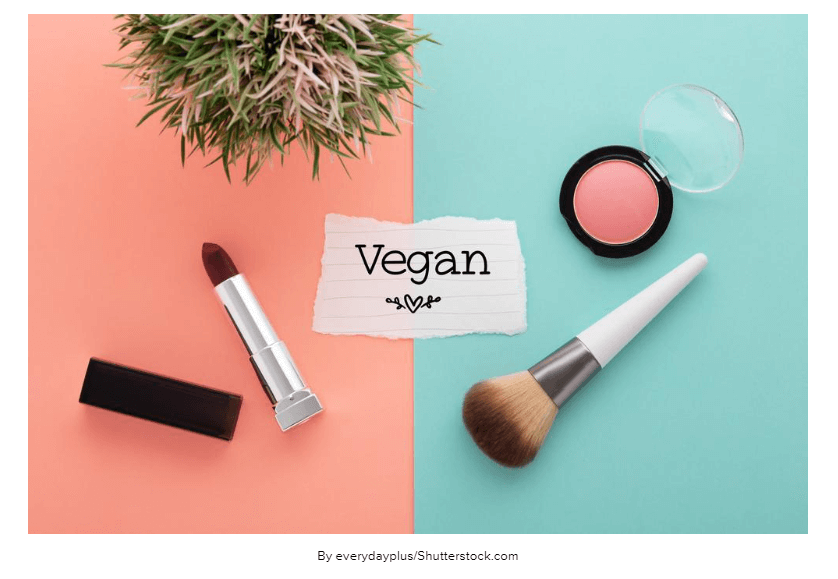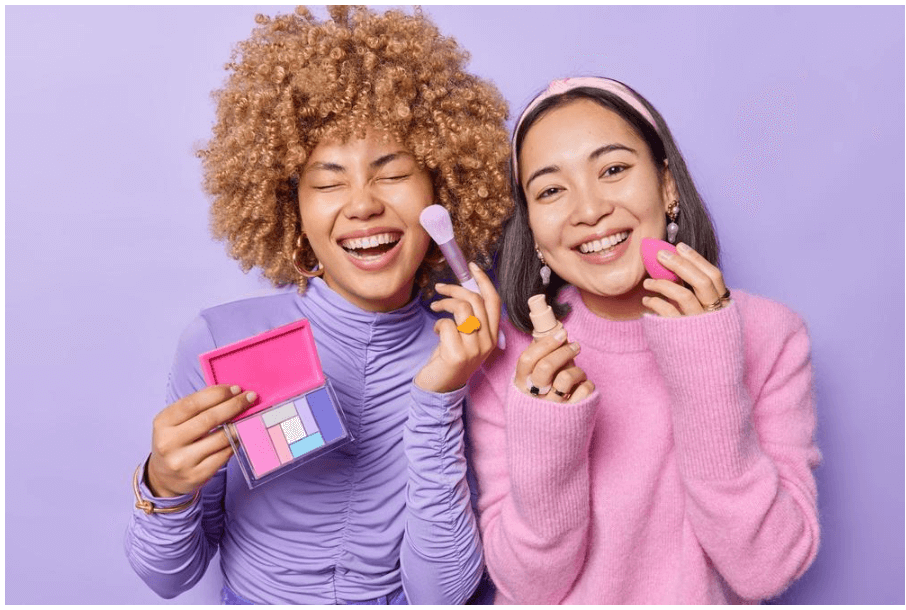When shopping for makeup, you’re probably thinking about how a particular color will enhance your features, ease of application, or budget. While these are all valid considerations, have you ever considered choosing brands that support environmental and community causes? Perhaps you’re not even sure what that means regarding makeup — let us explain!
Whether a company is a large corporate conglomerate or a small start-up, makeup and vegan skincare brands are taking proactive measures to foster ethical practices and reduce their carbon footprint. This means vegan makeup that’s better for you, animals, and the environment. So, before choosing your next batch of products, check out these tips to help you shop for makeup essentials that are making a difference beyond boosting your self-esteem.
How Do Makeup Brands Try to Make a Positive Impact, Anyway?
Contents
Makeup brands are making a positive impact in several ways. For starters, they’re socially responsible, working hard to create awareness and provide financial assistance to various causes such as homelessness and domestic abuse. Brands are also instituting recycling programs to reduce their environmental footprint.
You can do your part by purchasing makeup from positive-impact brands, including those within your community.
Shopping Locally for Makeup
There are several benefits of shopping locally for makeup.
- It’s typically more eco-friendly
- Ingredients are of quality and often locally sourced
- Supports economic growth and sustainability while contributing to the success of smaller businesses and start-up
- Even online-only brands still support grassroots community efforts
Supporting Ethical Makeup Brands
For a makeup brand to be ethical, it must have the following qualities.
- Sustainable packaging
- Eco-friendly business practices
- Cruelty-free
- Formulated with clean ingredients
- Vegan
- Void of palm-oil
- Provide charitable giving
- Have ethical ingredients that adhere to fair trade practices
- Fair treatment of employees
When we talk about brands reducing their carbon footprint, we’re referring to the amount of greenhouse gases) generated by our daily actions. The average person’s carbon footprint in the U.S. is 16 tons, amongst the highest rates worldwide — the global average is only 4 tons. We must lower the average carbon footprint to under 2 tons by 2050 to avoid a two-degree global temperature increase.
That said, choose beauty brands that minimize packaging waste and as much waste as possible during production. Packaging should be recyclable, reusable, or compostable. Paper is an excellent choice because it can be harvested from materials in sustainable forests, recycled, and manufactured without the use of chemicals. Aluminum is a sturdy option that’s also lightweight, recyclable, and BPA-free. Aside from minimizing packaging waste, an ethical beauty brand should also have waste and recycling practices in place.
Being an ethical brand isn’t just about clean ingredients and environmental practices. It’s also about giving back, whether donating products or much-needed funds to help communities in need. For example:
- Cancer
- Domestic Abuse
- Homelessness and Poverty
- Veterans
- Racial and Social Justice
- Under-Resourced Youth
- Education
- LGBTQ+
Reducing, Reusing, and Recycling Makeup Packaging
As a consumer, you are responsible for reducing, reusing, and recycling your makeup packaging — the “three R’s” in makeup shopping! Only buy what you need to avoid wasted, expired products. Look for brands that offer a recycling program or find a local drop-off center. Many companies include instructions on how to recycle their products properly, too.
Also, think of creative ways to repurpose packaging, such as storing elastics or jewelry in a compact, making travel-sized product containers, or using an old lipstick container as a pill box — you get the idea.
While you’re doing your part, makeup brands are instituting carbon-neutral shipping processes so that deliveries are calculated to know how to neutralize their environmental footprint. Other efforts include:
- Becoming certified partners with environmental groups like 4Ocean to obtain their Plastic Neutral Certification while removing waste from the world’s rivers, oceans, and coastlines.
- Donating a portion of the proceeds of a product to non-profits like One Tree Planted to help reverse our impact on the earth.
- Revamping packaging to raise the percentage of glass or post-consumer recycled materials while reducing plastic use.

Next, Identify Which Products You Actually Need
A show of hands for anyone with that drawer dedicated to non-used or expired products? Look, we get it — it’s fun to experiment, but at some point, you need to examine the contents of that drawer to determine what you’re not using to prevent needless waste.
Essential makeup items are those go-to products you use regularly, not those reserved for special occasions or when you feel like experimenting with, like, say, neon blue eyeshadow. In other words, prioritize. Also, think about how often you wear cosmetics so you don’t over-purchase.
Sample Shopping List
Remember to add skincare products like a lightweight moisturizer to your shopping list to ensure your makeup goes on flawlessly.
Concealer: Everyone can benefit from a creamy concealer because it helps disguise pesky under-eye circles and blemishes. For eyes, go one to shades lighter than your natural skin tone to avoid the raccoon effect. There are also colored options to neutralize unwanted hues. For example, green for redness (blemishes, rosacea, sensitivity) and orange for blues and purples, such as severe undereye circles or telangiectasias, small, widened blood vessels with a spider web appearance.
Foundation: While not everyone chooses to wear it, foundation creates the perfect canvas for the rest of your makeup products. There are formulas to address everything from oiliness to dryness, and they’re available in sheer to full coverage, depending on your preference.
Blush: Adding a pop of color to the apples of your cheeks helps brighten up your complexion. Opt for a cream-based formula if you want a more dewy, natural look.

Translucent Setting Powder: Choosing a loose translucent setting powder eliminates the stress of your powder clashing with your foundation, concealer, or natural skin color. There are also translucent formulas for darker skin tones.
Eyeshadow Palette: Whether you opt for creams or powders, an eyeshadow palette takes the guesswork out of determining which colors go with which and complement your eye color. Some days, you may want to use the neutral shade to instantly brighten your eyes, whereas others, you may prefer to create more dimension.
Mascara: Mascara is one of the most popular cosmetics—and with good reason. It instantly makes you look more put together and awake, even without accompanying products. There are several different formulas, such as lengthening, volumizing, and thickening, and it’s available in various colors to complement your skin tone and eye color.
Eyeliner: Remember how we talked about priorities? If you decide to wear mascara but not eyeshadow, you don’t necessarily need eyeliner. However, adding eyeshadow to the mix does compliment a complete eye look. Just make sure it’s blended into the lash line to avoid any harsh demarcation lines.
Brow Pencil: For some, achieving polished brows only takes a brow gel and brush. However, a brow pencil is a valuable addition to your routine if you need to fill in some sparse areas or create more symmetry.
Lipstick: While lipstick enhances your complexion (and, in some cases, teeth color), it can also provide hydration and protect your lips from sunburn. There are matte, cream, and sheer formulas, all of which look better when paired with a liner. If you’re not into full coverage, go for a gloss.
Tools: Whether your makeup routine includes two steps or ten, quality tools like makeup brushes and beauty blenders can make all the difference.
Before You Check Out, Research the Best Makeup Brands
You’re already on the right track if you’re looking into ethical makeup brands because they check all the right boxes. However, perform due diligence by doing a little research to ensure the brand is truly ethical. Along with everything we discussed, ensure the products are void of harmful ingredients like parabens, sulfates, and fragrances — sales of paraben-free products are growing 80% faster than other products in the beauty market.
Thoroughly check out the website for information on sustainability efforts, giving back practices, ingredients, ways the brand is reducing its carbon footprint, and whether or not it’s vegan and cruelty-free.
Makeup and skincare have significantly improved over the years, so it’s never been easier to find beauty essentials that positively impact you, animals, and the environment. Shop with ethics in mind and consider switching to vegan makeup.

